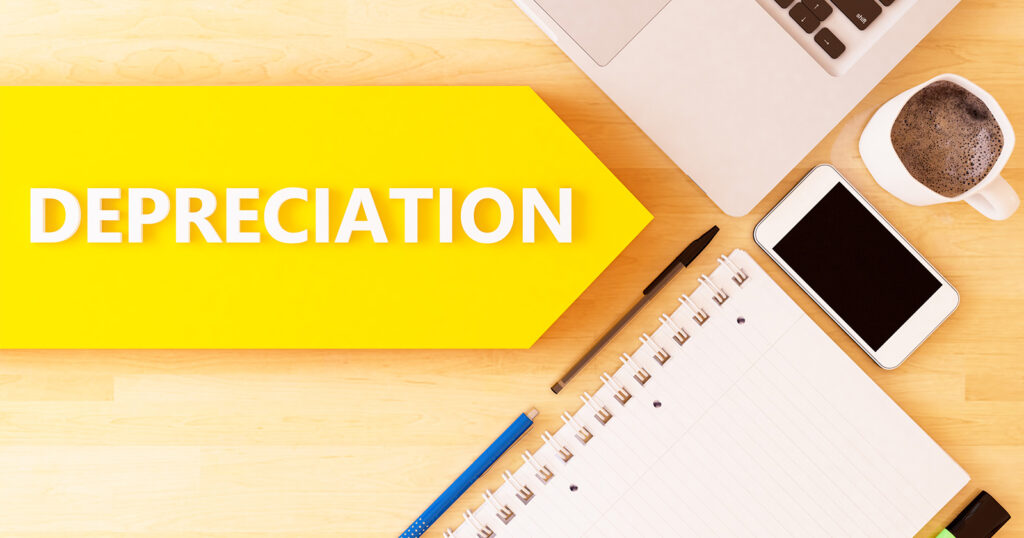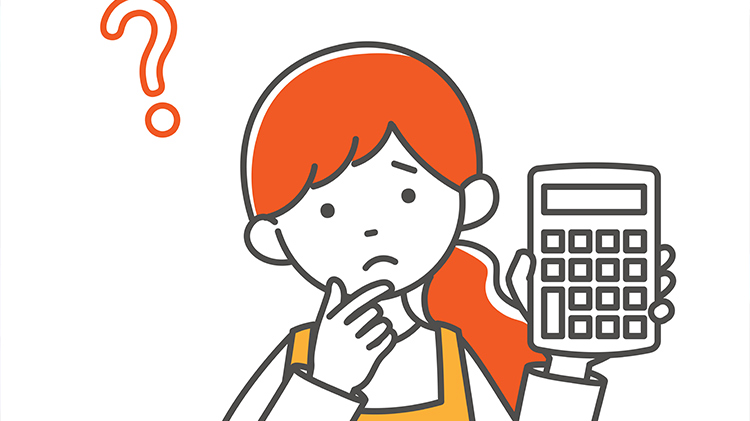It doesn’t matter if you own rental properties, are a small business owner or are an accountant. All of these individuals need to know how to calculate depreciation expense using the straight-line method of depreciation.
We’re going to look at when to use the straight-line method of depreciation to calculate depreciation expense and why it is one of the easiest methods to use for depreciation calculations.

What is Straight Line Depreciation? (The Definition/ Method)
Straight-line depreciation is when the value of an asset is reduced (property, plant, equipment, vehicles, furniture) down to its salvage value. The value is reduced in a straight line, with each year being the same amount.
Before we move on, it is worth defining salvage value and useful life as well. Salvage value is the amount that you can sell the asset for at the end of its useful life. Sometimes you might hear it called scrap value as well.
Useful life is how many years the asset will last. In general, for tax purposes, there are a few key useful life guidelines to be used. They are as follows.
| Years of Depreciation | Assets |
| Three years | Manufacturing tools and some livestock |
| Five years | Office equipment, cars, computers, light trucks |
| Seven years | Heavy trucks, office furniture, agricultural machinery |
| 27.5 years | Residential rentals |
| 39 years | Commercial buildings |
Now let’s look at how this comes into play when calculating depreciation expense.
How to Calculate Depreciation Expense Using the Straight Line Method (The Formula)
So just to quickly recap, you’ll need your asset value at cost, the useful life of your asset and your salvage value.
Then we are going to apply the following straight-line depreciation formula:
Annual depreciation expense = (The cost of the asset – The salvage value) / The useful life of the asset
It might seem a bit confusing so let’s break down the depreciation calculation step by step.
- First, identify the cost of your asset.
- Subtract your salvage value of the asset from the cost of your asset. This gives you the amount you can depreciate.
- Identify the useful life.
- Divide step 2 by step 3 to get your annual depreciation expense.
Read More:
Can I Learn Accounting On My Own? [The Surprising Truth]
Calculating Depreciation: A Real-Life Example

Let’s say your small business purchases a company car for $30,000 and after 5 years, you expect the salvage value to be $12,000.
- Your cost is $30,000.
- You are going to subtract your salvage value from the cost. $30,000 – $12,000 = $18,000. This is the amount you will depreciate by 5 years.
- Divide your depreciable amount by your useful life. $18,000/ 5 = $3,600 a year.
The solution is saying you will take $3,600 of depreciation expense for each of the 5 years on the car. If we look at this in excel, we’d see visually how the depreciation expense reduces the book value of the asset every year.
| Year | Beginning Value of the Year (Book Value) | Yearly Depreciation | End of Year Book Value |
| 1 | 30,000 | 3,600 | 26,400 |
| 2 | 26,400 | 3,600 | 22,800 |
| 3 | 22,800 | 3,600 | 19,200 |
| 4 | 19,200 | 3,600 | 15,600 |
| 5 | 15,600 | 3,600 | 12,000 |
The key takeaway is we got down to the exact salvage value of $12,000 that we estimated in the beginning.
How to Calculate Depreciation Expense: Example # 2
This time, imagine you own an auto repair shop and buy a new tire changing machine. It costs $15,000 and you believe it will be worth $5,000 in 3 years. Can you work through the problem and calculate the deprecation expense?
Again, we’ll subtract the salvage value of $5,000 from the cost of the asset $15,000. This leaves us with a depreciable base of $10,000 over a useful life of 3 years.
Divide the $10,000 by 3 years and you will arrive at a depreciation expense of $3,333.33 a year. Let’s go back to our visual representation to see the depreciation play out.
| Year | Beginning Value of the Year (Book Value) | Yearly Depreciation | End of Year Book Value |
| 1 | 15,000 | 3,333.33 | 11,667 |
| 2 | 11,667 | 3,333.33 | 8,334 |
| 3 | 8,333 | 3,333.33 | 5,000 |
Starting to see how calculating depreciation expense using the straight-line method works?
Exploring More Depreciation Methods
Ideally, you should master the straight-line method first and then move on to more complex depreciation methods. We are just scratching the surface of depreciation when using the straight-line method but it shouldn’t take too long to master.
Other types of depreciation can be used to speed up how fast a business takes depreciation or makes it more accurate based on how much a machine produces. Three other depreciation methods you are going to want to learn are:
- Double declining balance method
- Units of production method
- Sum of years method
On top of that, it is worth it for small business owners, larger businesses and anyone owning a rental, to familiarize themselves with Section 179 depreciation and bonus depreciation.
Quickly you’ll start to see why business owners hire accountants instead of maintaining depreciation schedules themselves. It never hurts to have an understanding of all the terminology though.
Read More:
What is Accrual Based Accounting? (Accrual Basis Explained)
Recapping the Straight Line Depreciation Method
So we’ve covered straight-line depreciation but let’s summarize the key takeaways:
- You need 3 things to calculate depreciation: An asset’s cost, estimated salvage value and useful life
- Depreciation expense will be the same each year when using straight-line depreciation
- The salvage value is the amount after all depreciation is taken.
How to Calculate Depreciation Expense: Straight Line Method | Final Thoughts
Work out a few calculations and you’ll have your head wrapped around how to calculate depreciation expense. While you’ll use excel or software in the day-to-day life of an accountant to calculate depreciation, it is important to understand how and why assets are being depreciated.
Now you’ll be all set to move onto the double declining method or the units of production method.



